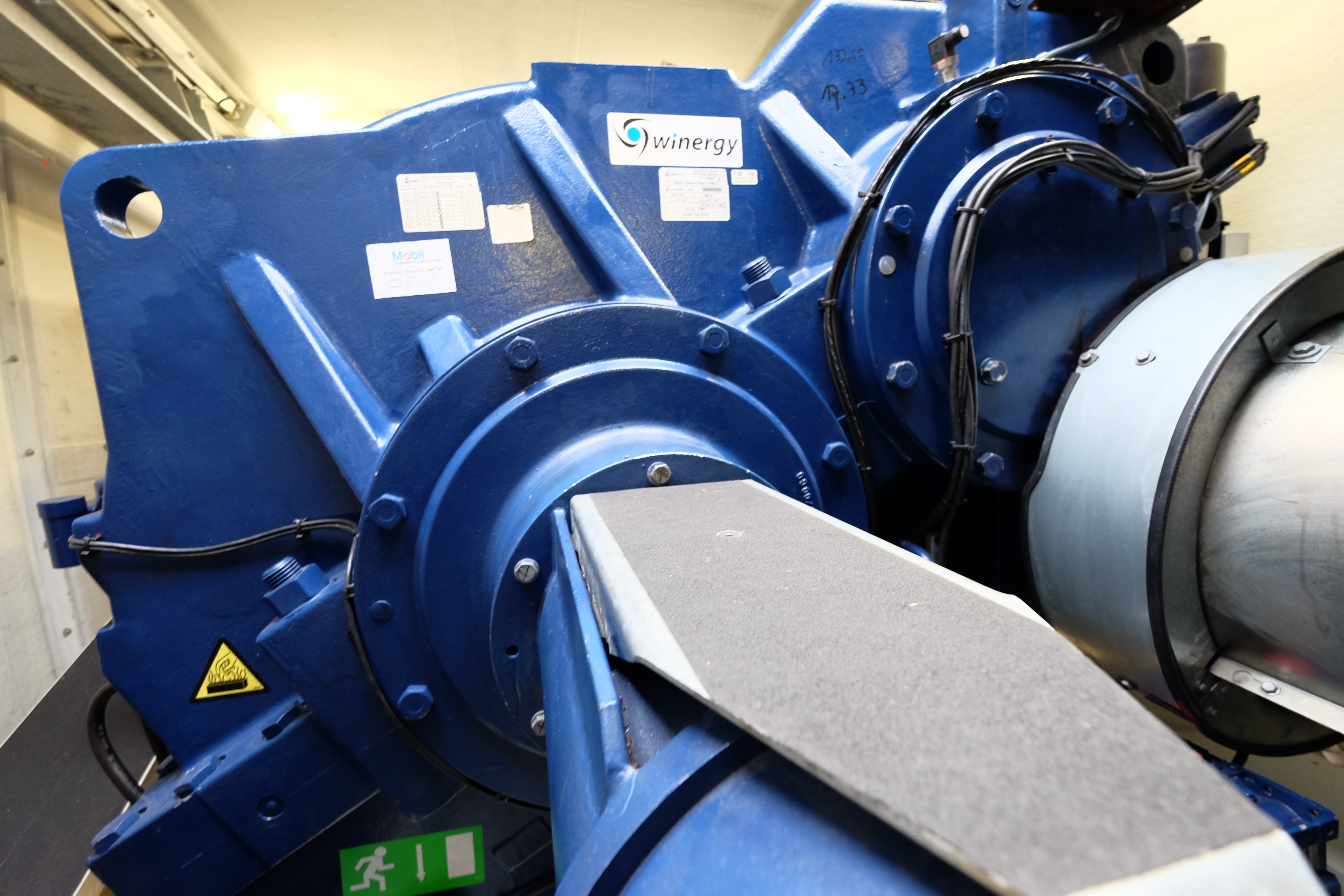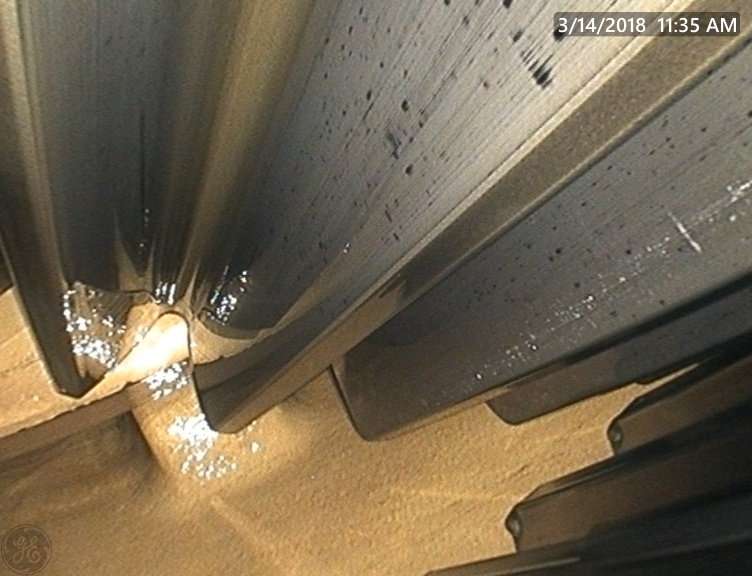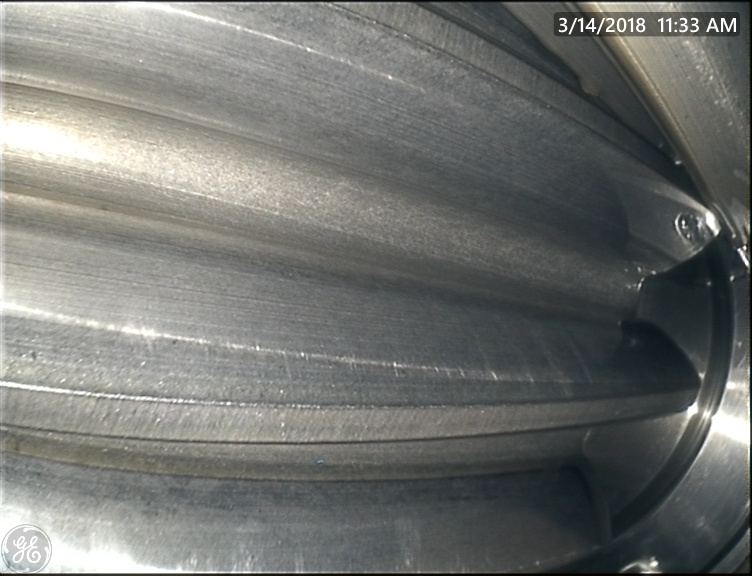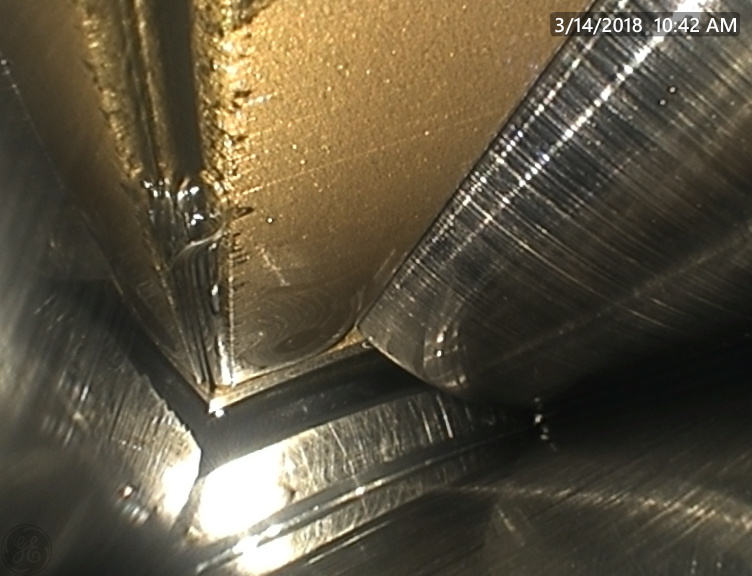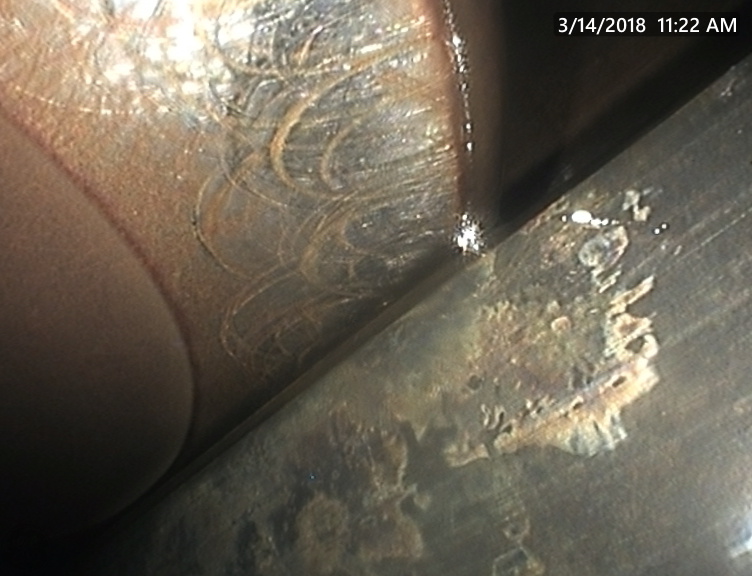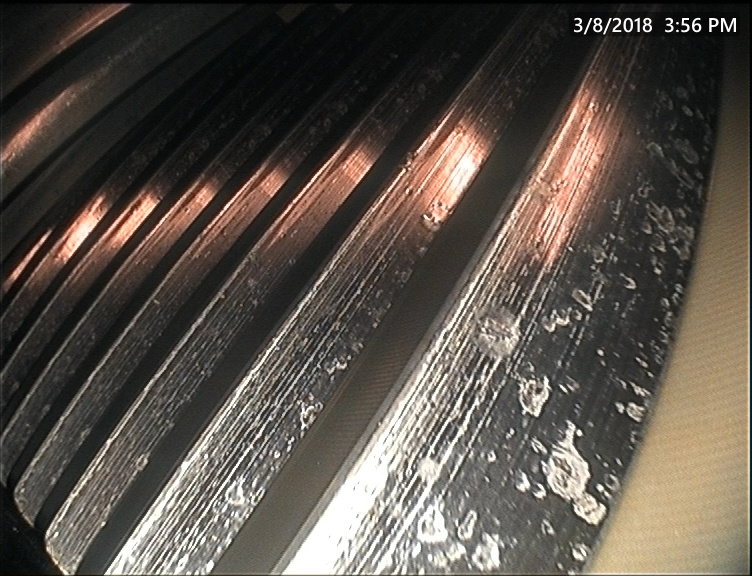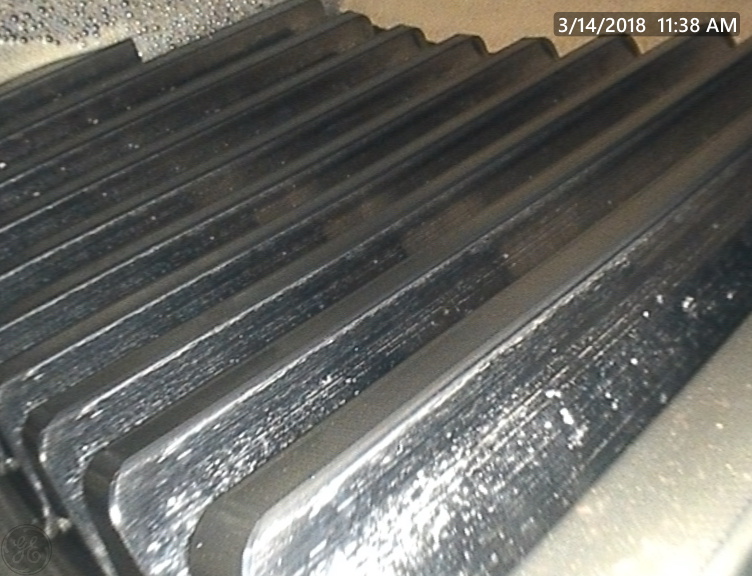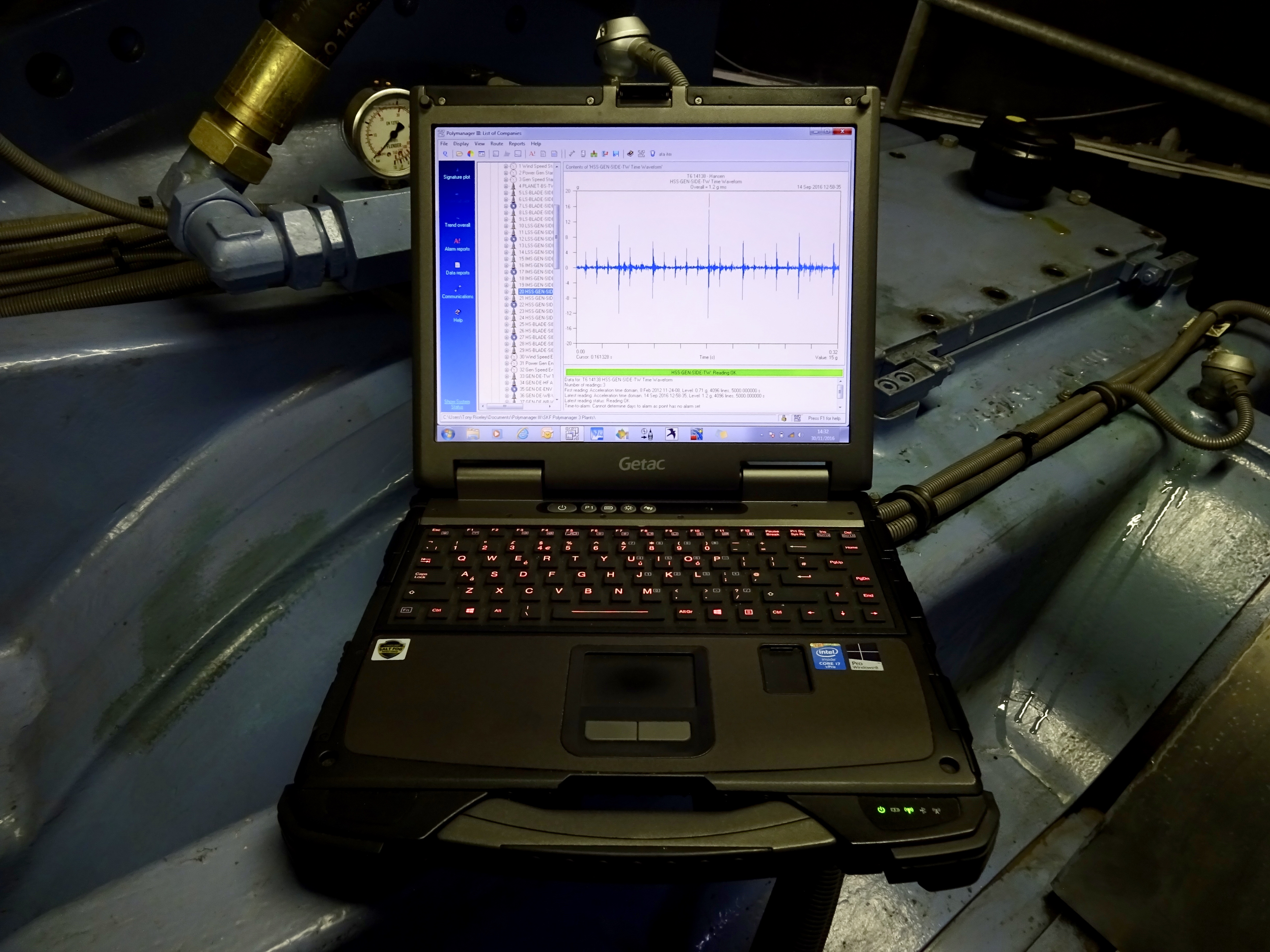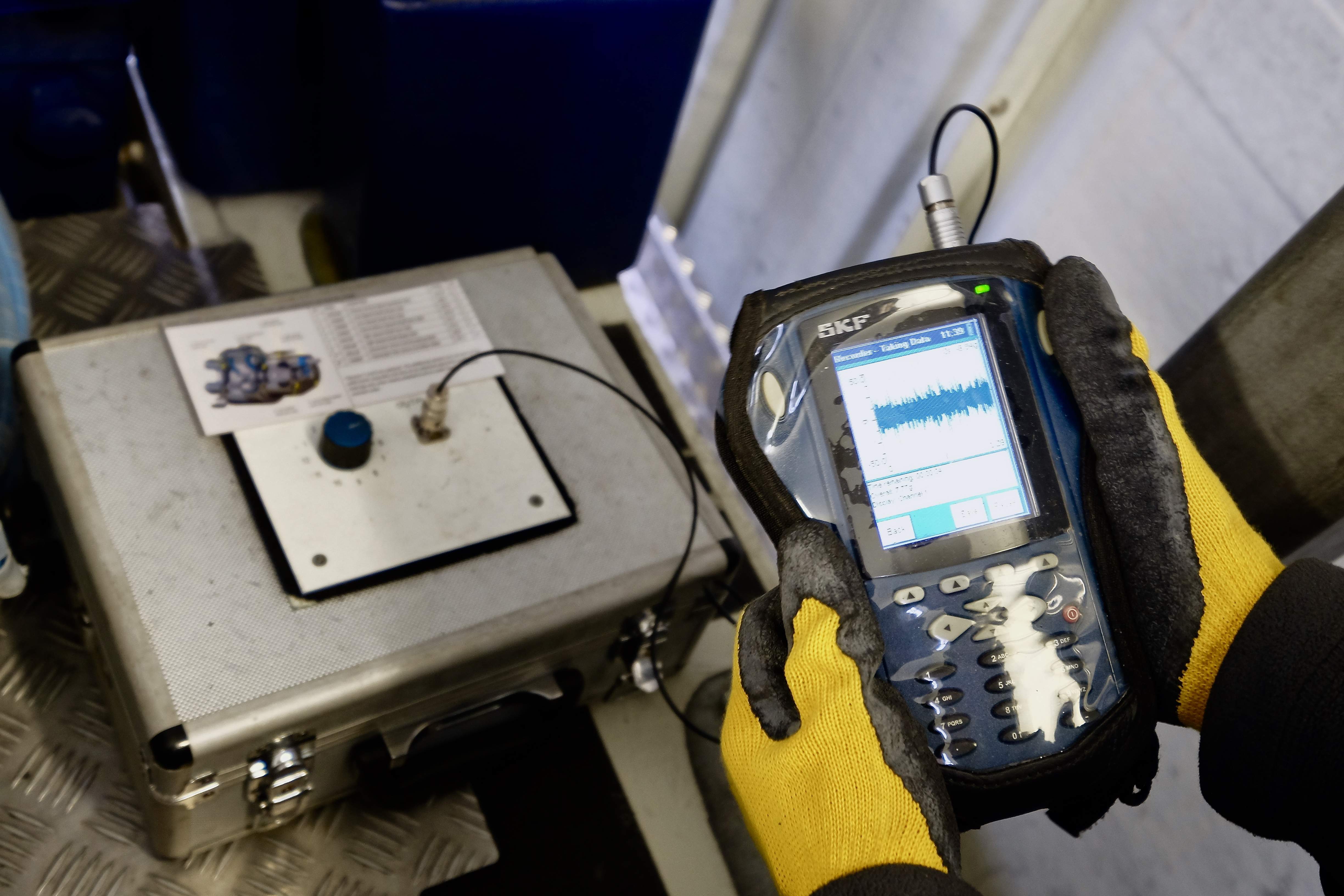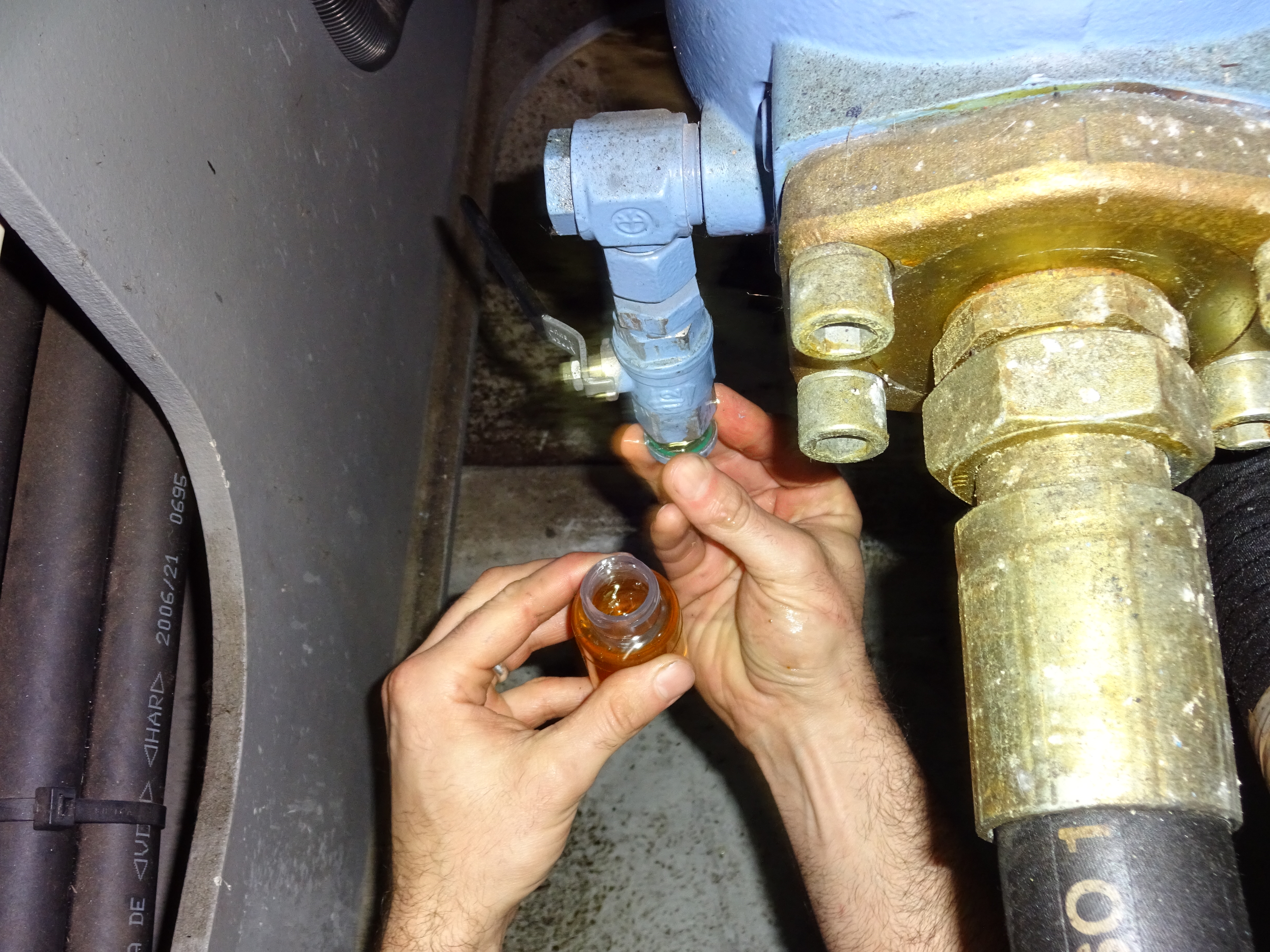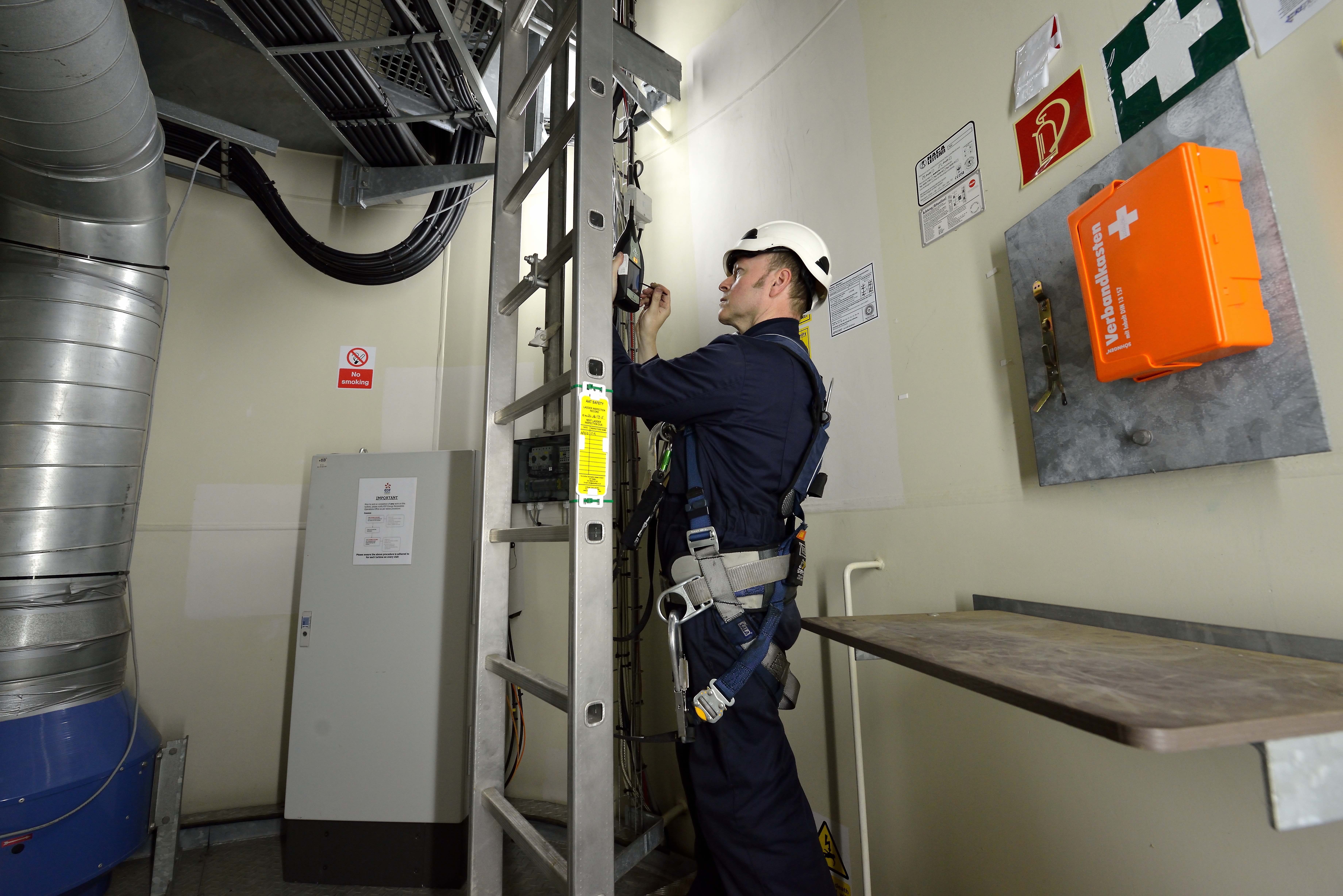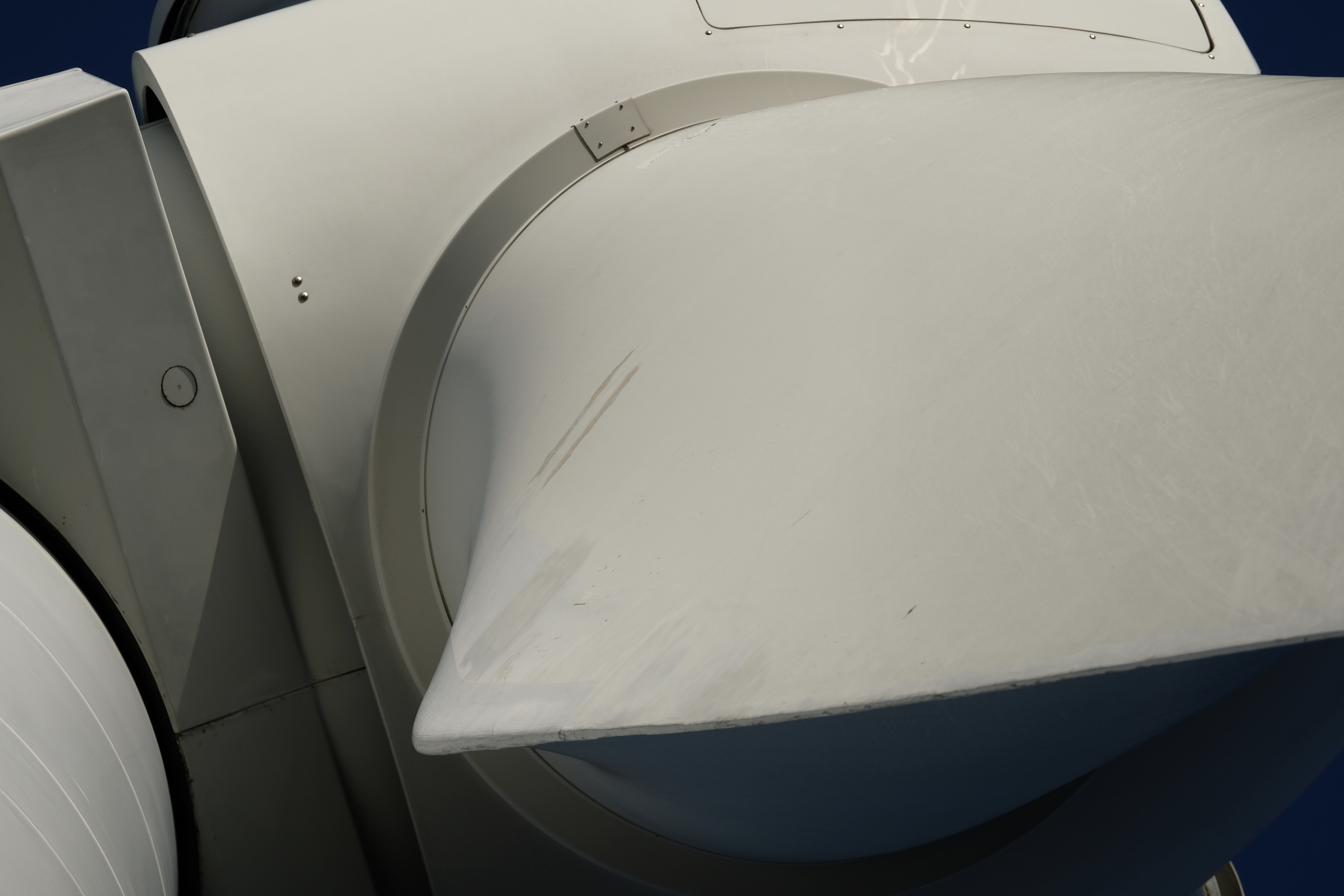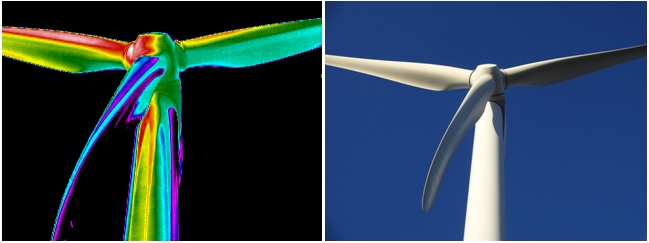End of Warranty Gearbox Inspections
With our extensive knowledge of gearboxes manufactured by Winergy, Hansen, Moventas, Lohmann & Stolterfoht, Metso, Bosch Rexroth, Siemens, Flender and others, our independent wind turbine gearbox inspections are unsurpassed within the wind energy sector. We utilise all our collective diagnostic tools, skills, experience and knowledge for this most vital of preventative maintenance inspections.
In order to present the client with the most comprehensive and detailed assessment covering all potential operational issues, mechanical wear or underlying defects affecting the gearbox, we employ the following condition monitoring techniques on every inspection:
Acoustic Analysis: to determine initial gearbox and generator related issues from emitted noise conducted at the base of the wind turbine
Vibration Analysis (gearbox): to identify the source and severity of the problem and assess overall operational condition of the gearbox
Vibration Analysis (generator): to determine the condition of the generator bearings, stator and rotor
Endoscope Inspection: to visually identify component wear, damage and severity
Oil Sample Analysis: to determine particle wear, contamination and ISO cleanliness
Visual Inspections: observation and reporting of:
- oil level and cleanliness
- magnetic dipstick check
- oil filter condition
- lubrication feed systems and piping condition
- estimated thickness to brake disc and coupling wear
- degradation of shaft seals or any leaks
- condition of cooling fan and gearbox internal casting
In-Warranty Commissioning & Conformance Testing
We also offer in-warranty commissioning and conformance testing which includes all the above inspection techniques enabling us to highlight any defects prior to the end of warranty term, thereby saving additional expenditure and offsetting all rectification costs to the Original Equipment Manufacturer.
Following any gearbox maintenance repairs we can independently test and commission the gearbox (and generator) to confirm all tolerances, alignment and operational criteria have been met in accordance with ISO standards.
Despite the complexity of all these diagnostic methods, we summarise the collective results of the analysis into a clearly written and easily understood report document, so that any maintenance or repair work can be prioritised and implemented accordingly.
Endoscope Inspections
Remote visual inspection using an endoscope (also commonly referred to as a 'borescope') is the most proven and effective method when inspecting wind turbine gearboxes. By inserting a videoscope probe through the opening hatch of the gearbox and in between each roller of a bearing, it is possible to inspect and record minor flaws occurring on the cage, inner and outer races, roller surface and edges.
Flaws that have grown larger and more numerous since the previous inspection on the high speed shaft and bearings can be easily identified and earmarked for replacement in-situ before secondary damage spreads to other areas, preventing having to lower the gearbox onto the ground using a crane or other costly devices and causing power loss during the repair.
The low speed planetary stage bearings and gears can also be easily inspected with endoscopes by using near focal optical adaptors which particularly aid the inspection of gear teeth. Some of the common issues that can be easily identified using an endoscope include the following:
- varying degrees of bearing and gear wear
- micro-pitting to heavy-pitting
- scuffing and uneven wear patterns
- carbonisation and effects of high or increasing temperatures
- particle wear
- fractures
- fatigue, stress, corrosion and cracking
- light and heavy grooving / scoring
- spalling
- false and true brinelling
- loading anomalies
- adhesive wear
- plastic flow
- friccohesity
- abrasive and erosive wear
- fretting
- heavy running marks
- fluting and arcing effects
Example Endoscope Images
Using the very latest endoscope technology, we ensure the highest possible image quality when undertaking wind turbine remote visual inspections as demonstrated in the following examples:
-
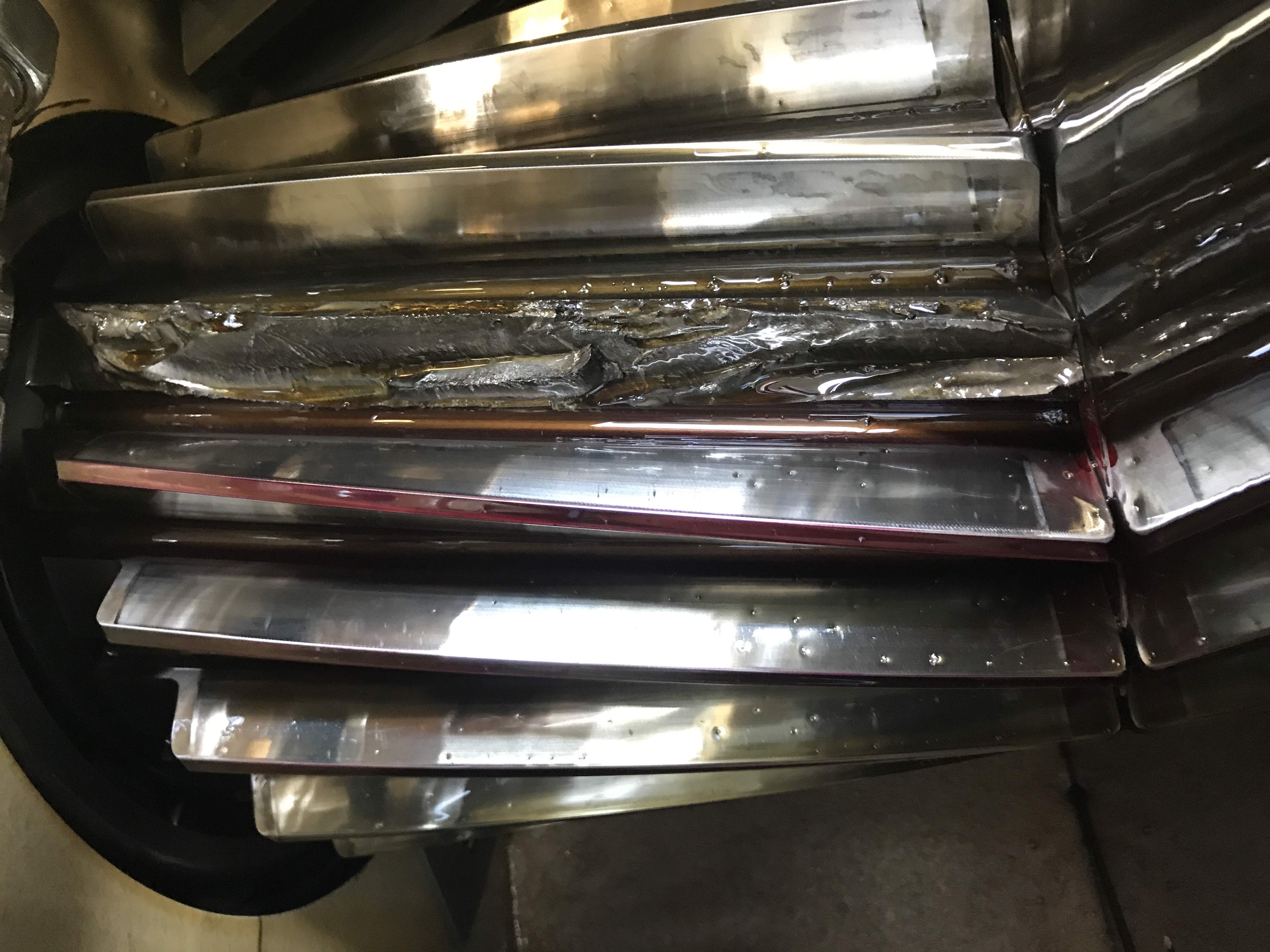
Gearbox Intermediary Speed Pinion Gear Fractured tooth -
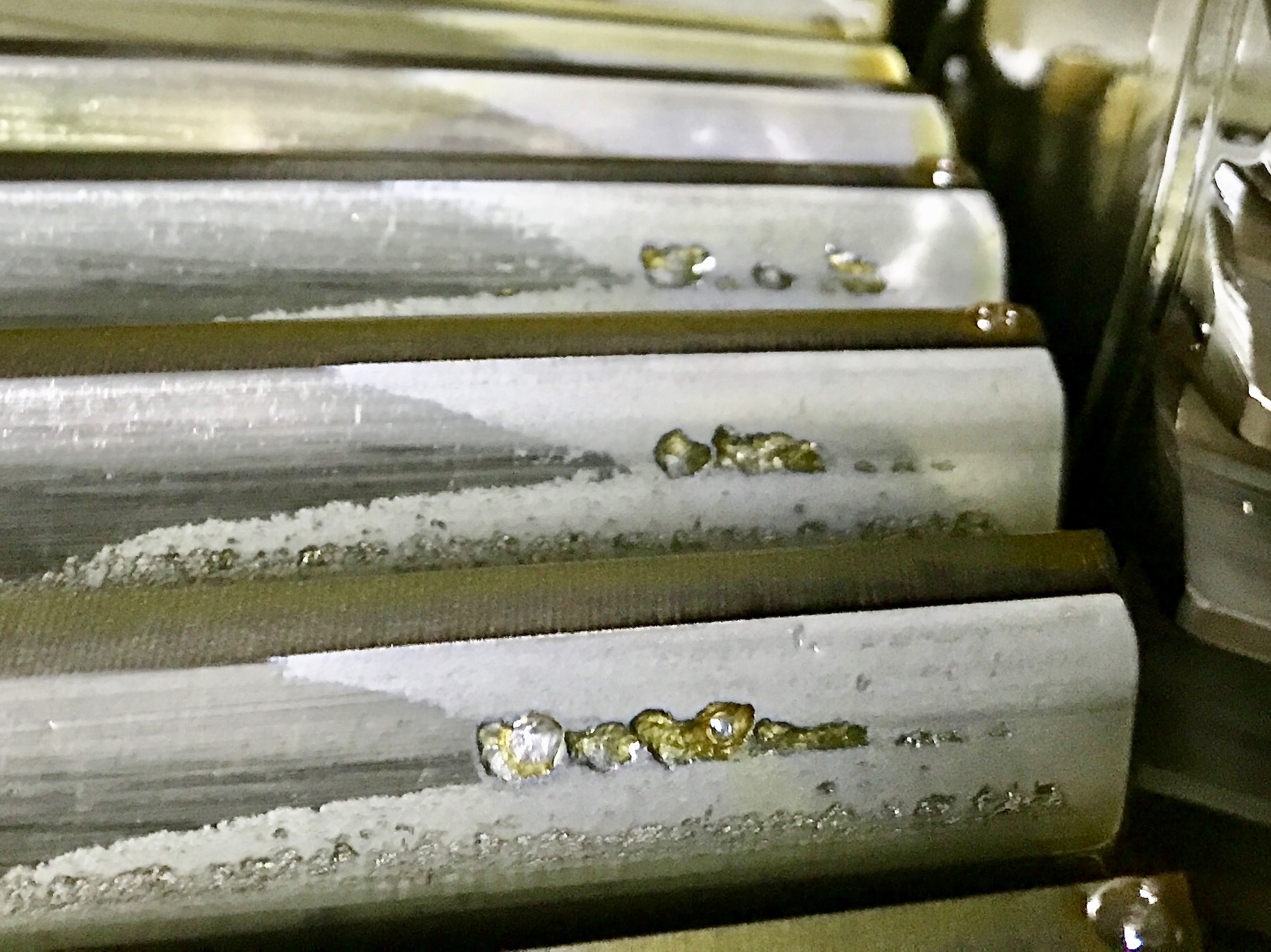
Gearbox Low Speed Helical Gear Destructive pitting occurring along the pitch line on three active faces -
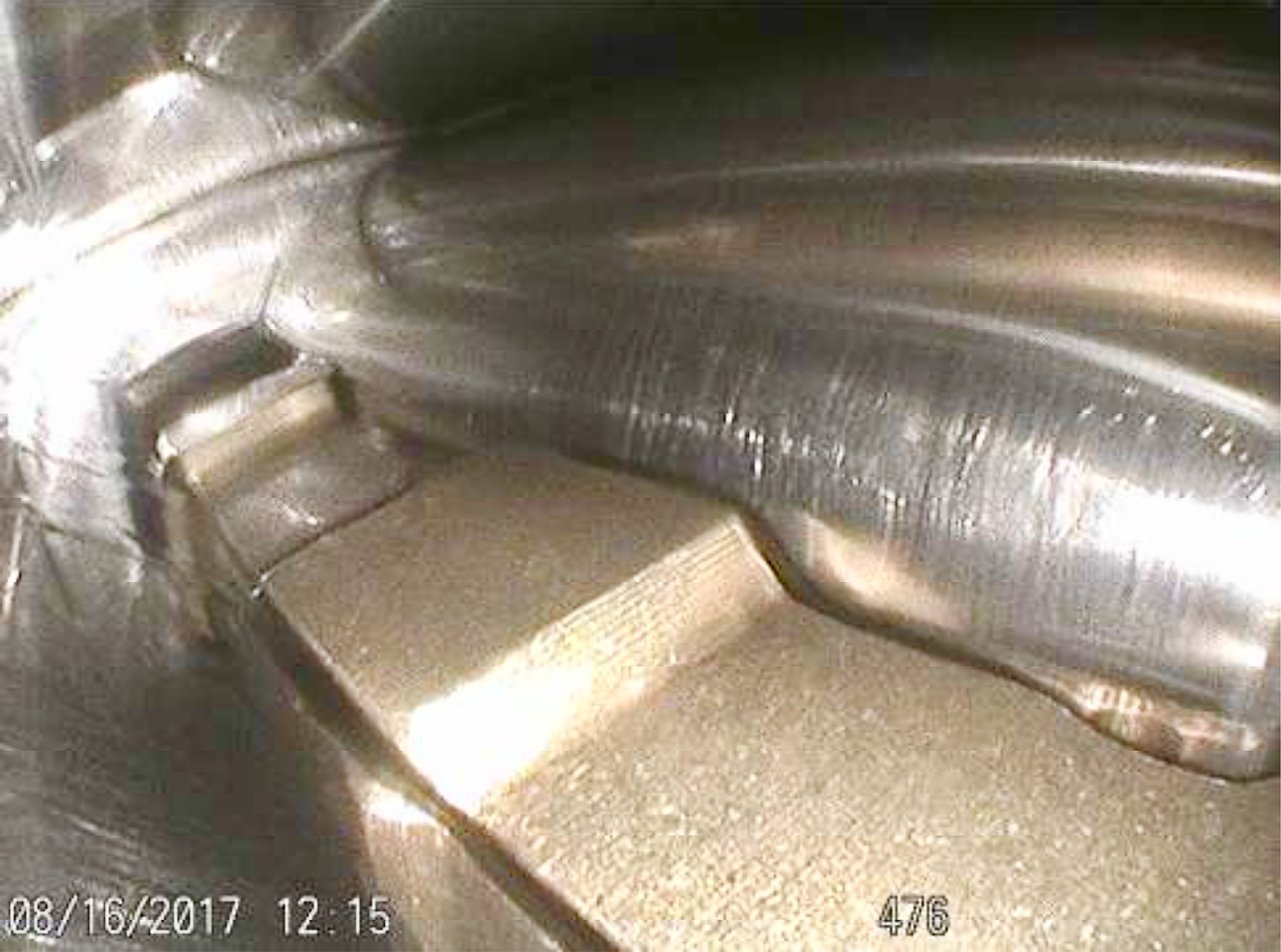
Gearbox Planet Wheel Bearing Light micro-pitting observed on rollers -
Gearbox Planet Wheel Gear Corrosive wear and initial scoring occurring along the addendum of each profile -
Gearbox Sunwheel Pinion Gear Light scoring occurring along the active flank pitch line -
Gearbox High Speed Shaft Bearing Pronounced smearing and scoring on rollers & particle wear along edge of brass cage -
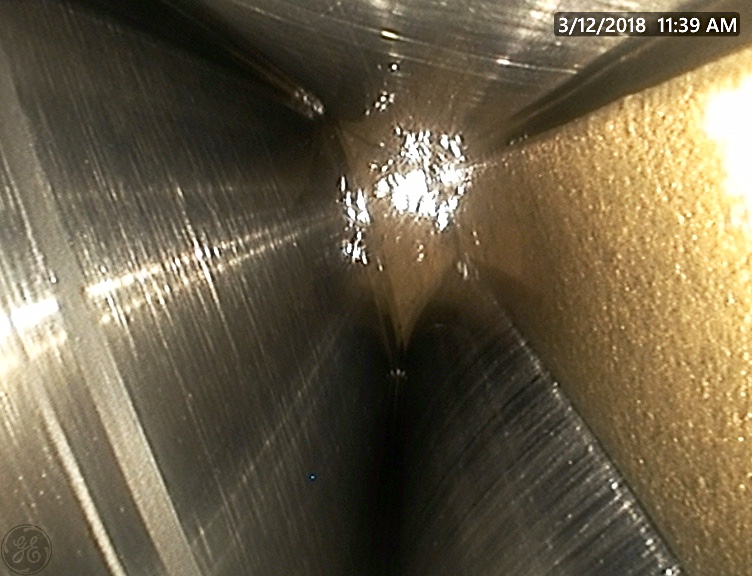
Gearbox Cylindrical Roller Bearing Heavy scoring present on outer race -
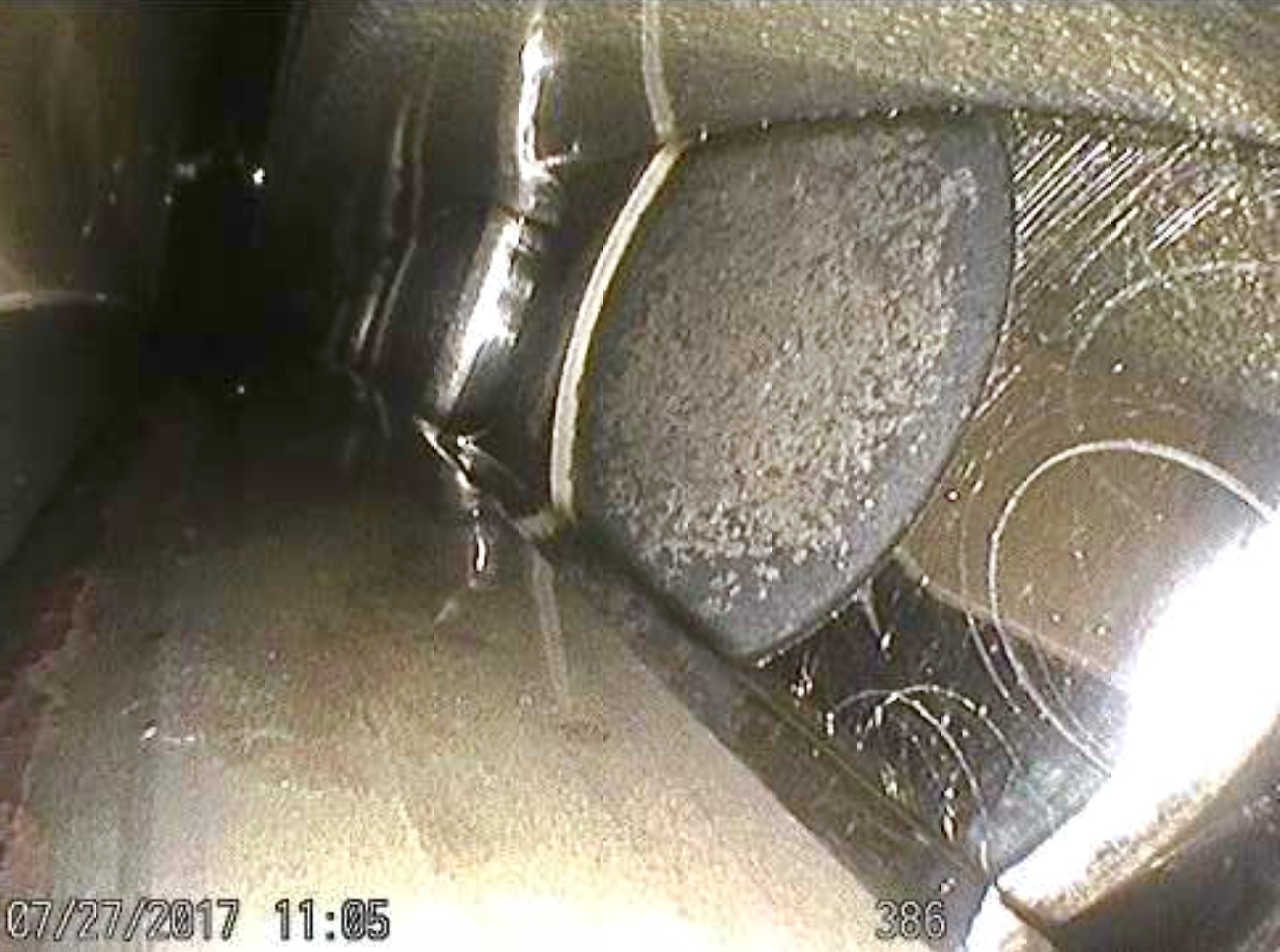
Gearbox Planet Wheel Bearing End loading (swirl marks) and spalling (abrasive flaking) observed on end of rollers -
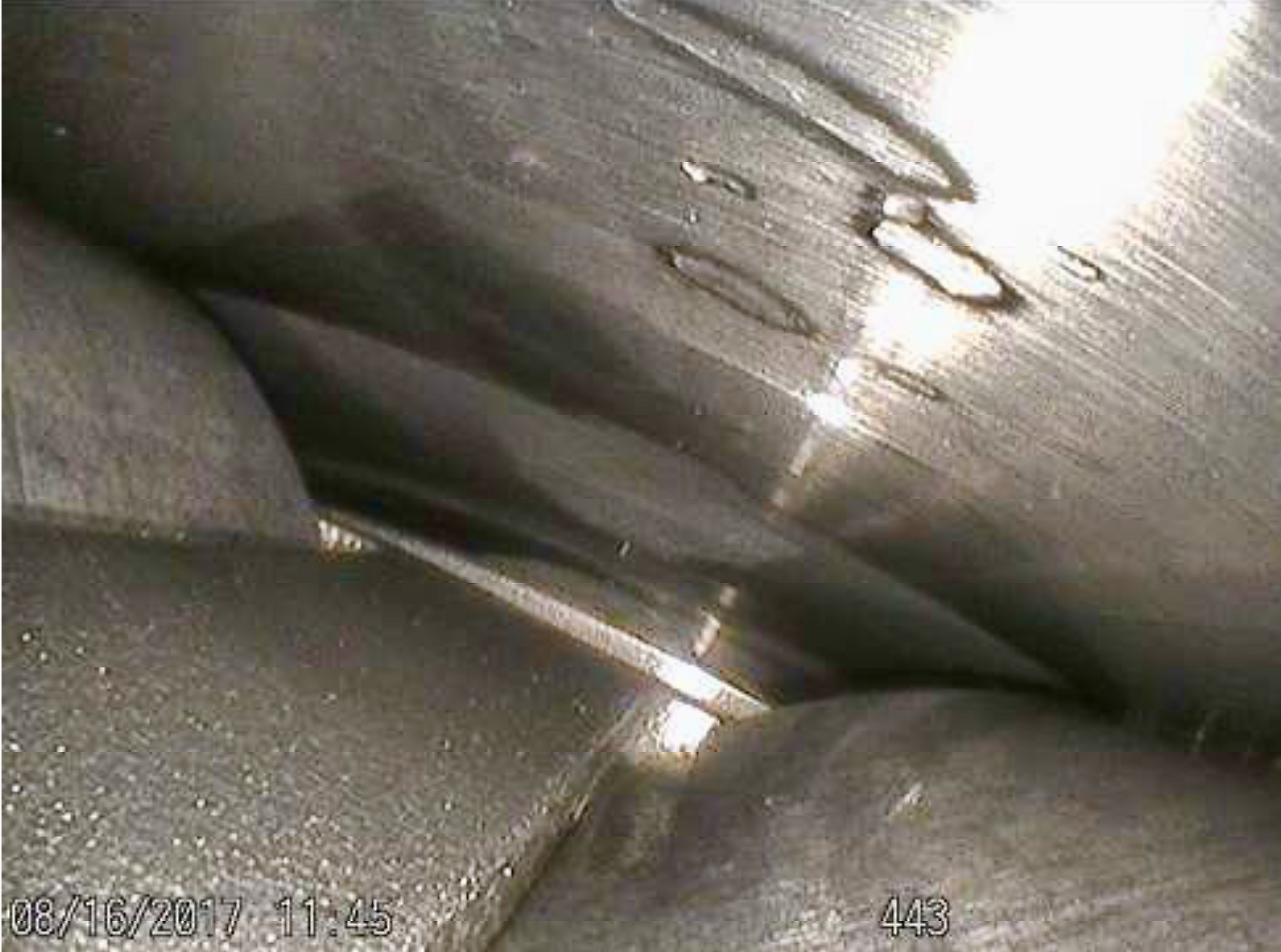
Gearbox Intermediary Speed Bearing Macro pitting occurring on outer race -
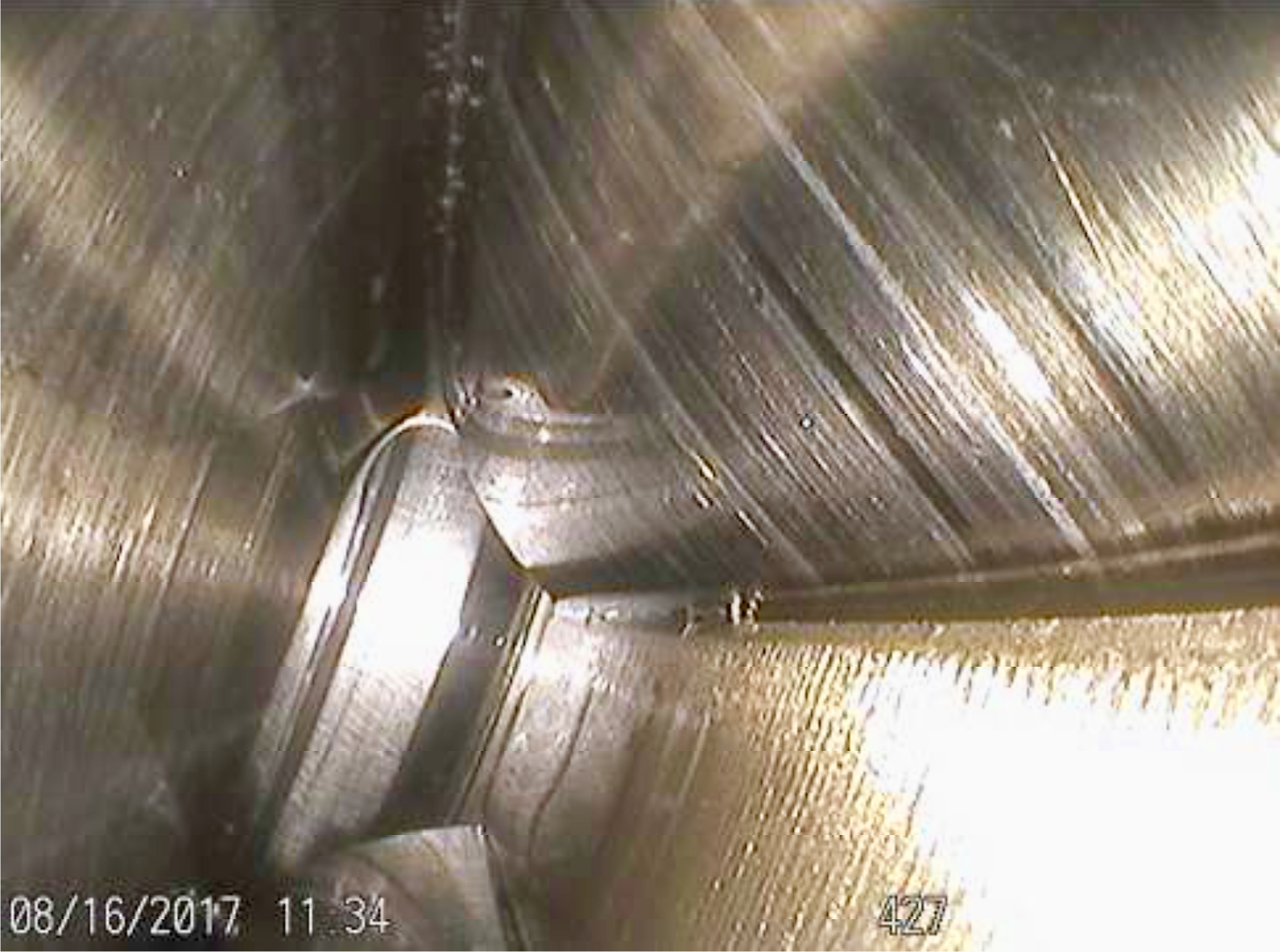
Gearbox Intermediary Speed Shaft Bearing Scoring evident on rollers -
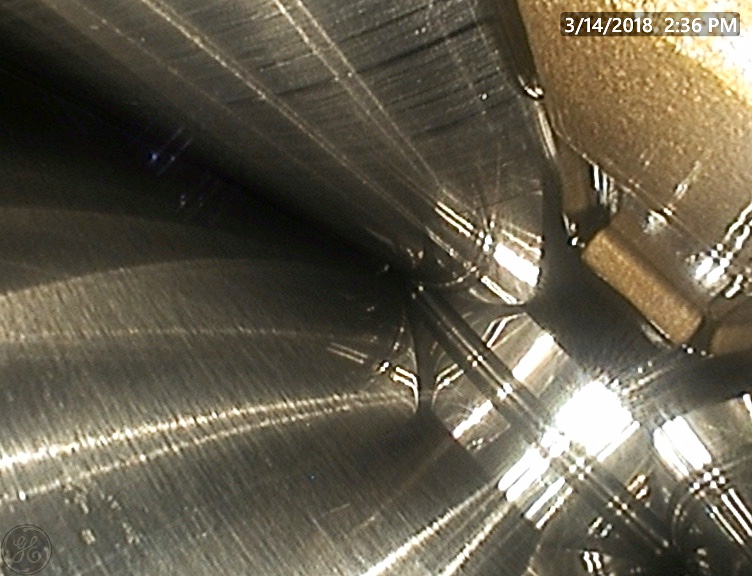
Cylindrical Roller Bearing Light running lines and micro pitting on rollers and outer race -
Gearbox Planet Wheel Bearing Corrosion, spalling and end-loading marks observed -
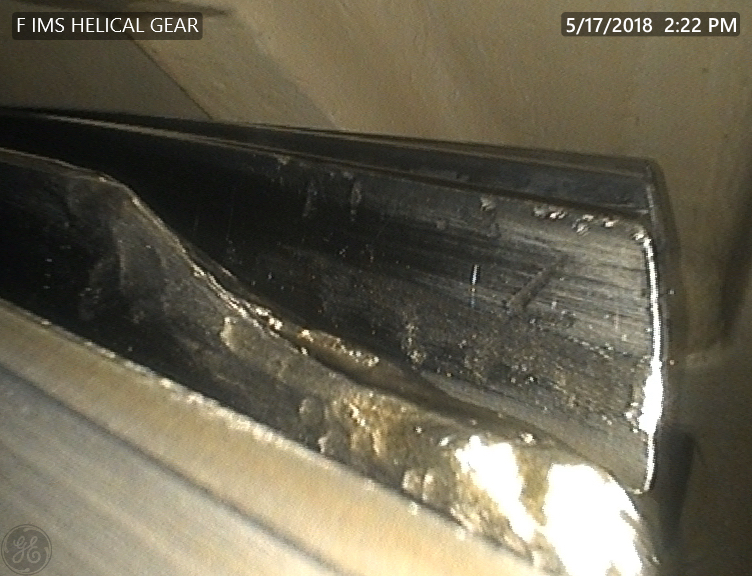
Gearbox Intermediary Helical Gear Fractured tooth -
Gearbox Planetary Ring Gear Destructive pitting and heavy particle wear on active flanks -
Gearbox Planetary Ring Gear Surface material loss and abrasive wear on active profiles
Vibration Analysis
Vibration analysis is by far the most powerful and reliable machine condition monitoring diagnostic technique, enabling us to accurately identify the source and severity of the problem and detect the earliest signs of component wear.
CMS System Integrity Check & Data Interpretation
Many wind turbine gearboxes have pre-installed CMS monitoring systems with permanently mounted accelerometers linked via a SCADA system, which enables real-time monitoring and vibration alarms to be investigated and acted upon. However, these systems are not foolproof and the following scenarios may occur:
- accelerometer open circuit failure
- cables and connections loose or damaged
- water ingress , oil contamination or condensation entering the sensor
- heat damage
- sensors becoming detached, skewed or loose
- sensors poorly or incorrectly mounted
- accelerometer calibration drift
- data misinterpreted or alarm bands / automatic algorithms incorrectly inputted
- incorrectly terminated or criss-crossed connections to the CMS monitoring system
- data signal link failures
All of these issues can lead to misdiagnosis via these systems, with potentially serious repercussions unless the entire system is extensively checked and verified throughout.
We therefore provide an independent accelerometer and CMS system check which can verify the integrity and effectiveness of the monitoring systems in place which ideally should be implemented before site hand over and during the commissioning stage. We can also independently analyse the data from these systems in order to determine the operational and component condition of the gearbox to give an accurate independent second opinion.
Portable Data Collection
For wind turbines without permanently installed CMS monitoring systems we collect vibration data from the gearbox, generator and main shaft bearings using a portable dual-channel FFT (fast Fourier transform) spectrum analyser data collector.
In combination with powerful software, we can extrapolate the collected data and determine a date to failure, thereby introducing a (less costly/reduced downtime) predictive and preventative maintenance routine as opposed to a (more expensive/increased downtime) reactive method. By using FFT (fast Fourier transform) spectral analysis in combination with an enveloping filter, we are able to distinguish between a cage or a roller defect occurring on a bearing and identify which gear in the drive train is worn, misaligned or damaged.
Additional processing techniques such as synchronous time waveform analysis, real-time recordings and dual channel bode plots allows us to accurately determine the condition of additional components such as the main rotor shaft support bearings and identify issues occurring on the low speed section of the gearbox such as the planetary ring and sun-wheel pinion, which are not easily accessible using remote visual inspection methods. Transients (momentary events) and resonance-related issues can also be captured and analysed by using these techniques.
Generators with cracked or loose rotor bars or stator wear can also be determined using vibration analysis. Potential resonance issues can be assessed using frequency response tests (bump tests) and shaft critical speeds or dynamically induced vibrations can also be assessed using Run Up Coast Down (RUCD) analysis.
Windnostics technicians are qualified to the highest ISO 18436-2 Category III standard in vibration analysis and certified by the British Institute of Non-Destructive Testing with over 25 years of machine diagnostic experience.
Oil Sample Analysis
Wind turbine lubricants need to last as long as possible, offering excellent oxidation and shear stability, whilst protecting key turbine components such as main bearings from failure and gears from micropitting.
Oil analysis, along with other condition monitoring tools offers
the potential to effectively manage gearbox maintenance by
detecting early damage as well as tracking the severity of the
damage; it is for this reason that most OEMs recommend routine
oil analysis as part of an effective maintenance strategy. Some of the common tests carried out during oil analysis include:
- fluid condition (viscosity)
- additives levels
- contaminants
- total acid number
- water content
- ISO cleanliness codes
- identification of wear metals
In addition, a particle-count sample test can also determine gearbox health. Each of these categories affects the gearbox, so it’s important to know what they are and how they impact the oil’s condition and gearbox life expectancy.
By regularly collecting and analysing oil samples, it is possible to extend oil drainage intervals and prevent potential secondary damage occurring on adjacent gears and bearings in the gearbox.
Noise and Acoustic Analysis
Real-time acoustic readings can be easily obtained inside the base of the wind turbine tower with the wind turbine still in operation. By using a sophisticated Sound Level Meter, with FFT (fast Fourier transfer) functionality and an onboard recording module, we can determine the low, mid-range and high-frequency attributes of the installation without having to ascend the wind turbine, which is a major advantage of using noise and acoustic analysis.
By utilising this method, it is possible to highlight and isolate areas of concern with either the gearbox or generator and can serve as a very useful 'heads up' condition monitoring tool before ascending the wind turbine.
Ideally, acoustic analysis should be implemented in advance during a separate visit on all the wind turbines in succession. A single reading take less than twenty seconds to collect and as data is obtained very quickly at the base of each wind turbine under similar wind speeds, an entire wind farm can be completed typically in less than a day! The results from this data can then determine which turbines are operating within specification and those that require further investigation using additional techniques.
Acoustic analysis also serves a useful means of cross-referencing the additional data obtained using vibration analysis.
In addition to analysing the acoustics of mechanical-induced noise, we can also independently assess environmental and noise nuisance complaints using the same diagnostic equipment.
Blade Inspections
Wind turbines blades require regular inspections which is traditionally achieved by using a three-person rope access team whereby experienced rope climbers descend each blade from the nacelle. Not only is this a slow labour-intensive process, there are clearly health and safety issues that need to be mitigated.
By using UAVs (unmanned air vehicle) drones, infrared thermal imaging cameras and high-resolution digital SLR cameras with powerful telephoto lenses, we significantly reduce the risks associated with these health and safety issues and typically increase productivity four-fold. UAV, infrared thermal imaging and high resolution photographic inspection is ideally suited for:
- post blade installation
- commissioning inspections
- periodical service inspections and scheduled maintenance
- end-of-warranty inspections
- damage investigation
- due diligence assessments
Wear dynamics such as turbulence, gravity, leading edge erosion and other critical defects found on the surface and interior structures of wind turbine blades show up as defects as follows:
- erosion due to small particle high velocity dust impact
- deceleration when protection films crack and flake off of gelcoat on the leading edge
- gelcoat erosion due to long term UV-radiation exposure
- degradation of the fiberglass composite laminates due to freezing and thawing
- delamination to a highly stressed trailing edge
- internal damage due to fatigue shows surface indication structural breakdown
- stress whitening and debonding of matrix and fibres
- corrosion
Cracks:
- linear cracks: parallel curvilinear stress, parallel stress, convergent stress field, divergent stress field
- thermal cracks: parallel thermal fatigue, isotropic thermal fatigue
- radial cracks: reserve impact, frontal impact
We also have considerable experience using UAVs / drones to inspect wind turbines and assess both the land and sky to mitigate risk and comply with all health and safety and legal regulations. Windnostics are members of the United Kingdom Thermography Authority (UKTA) and our technicians are qualified to ISO 9712 / ISO18436-7 Category II standard in thermography and certified by the British Institute of Non-Destructive Testing.
Benefits:
- Huge cost savings
- 75% time saving compared to traditional rope access inspections
- Operate up to 15 m/s wind speeds
- Health and safety
- Data analysis of entire blade
- Precise recording of size and location of defects
- Analyse rate of degradation
Infrared Thermography & Temperature Measurement
By detecting anomalies often invisible to the naked eye, thermography allows us to determine the condition of wind turbine high voltage transformers, switch gear, power cables, high and low voltage control panel components etc. Mechanical components such as bearings, couplings, drive shafts, brake discs and gearboxes which are often subjected to high levels of stress can also be quickly and easily identified using thermography. In addition to electrical and mechanical anomalies, blocked or contaminated filter systems and flow issues can also be ascertained using an infrared thermal imaging camera, capable of measuring temperature differentials within a tenth of a degree.
This proven non-destructive technique is also extremely effective at detecting the qualitative structural deformities occurring on wind turbines such as subsurface and hairline cracks and other irregularities occurring on towers, foundations and in particularly blades.
By using infrared thermal imaging cameras, we can easily determine the severity and pinpoint the exact position and source of the following fault types:
- effects of high stress in rotor blades
- potential areas of weakness and non-uniformity
- subsurface and hairline cracks
- delamination issues
- subsurface air bubbles on the trailing edge glue joints
- poorly bonded glass fibres
- water or ice ingress within the blade
- blocked or missing water drainage
- deformity on the blade tips and flanks
Windnostics are members of the United Kingdom Thermography Authority (UKTA) and our technicians are qualified to ISO 9712 / ISO18436-7 Category II standard in thermography and certified by the British Institute of Non-Destructive Testing.

